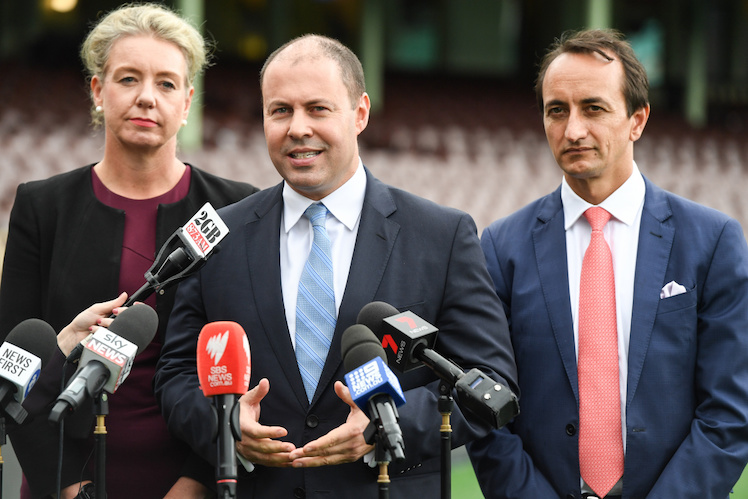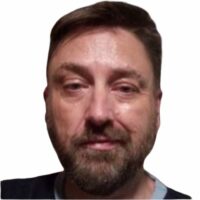There is no bigger target for the climate independents (or teals) than Josh Frydenberg. The federal Treasurer and Liberal deputy leader is locked in a pitched battle to hold his inner Melbourne seat of Kooyong against medical specialist Monique Ryan. Andrew Gardiner reports from ground level of the campaign.
Hastily painted-over murals, mass-vandalism of yard signs, front-page tabloid headlines and abruptly altered itineraries to fool the chasing pack: just some of the colour and movement in Election ’22’s most watched contest, the battle for Kooyong.
Kooyong, in Melbourne’s inner east, has been a fortress for the Liberal Party. The party’s founder and Australia’s longest-serving prime minister, Robert Menzies, held it for three decades. He was succeeded by Andrew Peacock, who rose to foreign minister and Liberal leader. The incumbent MP, Josh Frydenberg, is another heavyweight: federal Treasurer and deputy Liberal leader.
Frydenberg has faced a strong challenge from the Greens in 2019, and his primary vote fell below 50%. Now he is facing an even stronger challenge from his teal independent opponent, paediatric neurologist Monique Ryan. Defeat would make him the first federal treasurer to be unseated at an election in 90 years.
The change that refreshes: independents ring the changes in quest to renew Australian democracy
Sources close to both campaigns told Michael West Media that the former had raised $3 million – at least a quarter of it spent on snapping up every available Kooyong billboard – in a frantic effort to hold the seat after Ryan “appeared from nowhere” with the backing of Climate 200 founder Simon Holmes à Court last December.
Unable to match that money, Ryan is relying on a grassroots movement based on community engagement principles, which generated around 2000 volunteers and at least that many teal corflutes adorning the front yards of Hawthorn, Kew and Balwyn.
An official close to one campaign used simple numbers to explain the charged atmosphere around Kooyong as election day approached: Ryan led by the wafer-thin margin of 51 to 49, two-party preferred, according to internal polling carried out just days ago, May 14-15. “Josh Frydenberg is seen as the future of the Liberal Party; if he’s defeated, the party will veer off to the right, and so might the country”, the official said.

Change of Heart: Monique Ryan’s campaign was allowed to paint a mural on this building in Kew (left) on Friday before permission was withdrawn and tradesmen abruptly painted over it the following day. Photos: Ryan campaign.
Amid the frenetic final days of the campaign, this reporter walked into a circus-like atmosphere at Hawthorn’s early voting centre, as a boisterous crowd eagerly anticipated the Tuesday arrival of one of Frydenberg’s highest-profile supporters, former prime minister John Howard. Tipped off on Howard’s impending arrival by Holmes à Court on Twitter, a sea of teal-shirted antagonists descended upon the scene, quickly followed by journalists, cameramen and federal police.
The atmosphere was electric: “Howard could make a difference”, one Liberal gushed. “Where’s Johnny?” a Ryan operative muttered. It was all a false alarm: their covert itinerary exposed, Howard and Frydenberg settled for a quick photo op at a local grocery and dry cleaners before the former PM was whisked away to help out another threatened Liberal in neighbouring Chisholm.
As those present processed their collective letdown, this correspondent took the chance to interview assembled officials, volunteers and ordinary voters about their policies and views at the early voting centre and nearby headquarters of both campaigns. “I felt a really positive vibe when I met [Ryan] at the Glenferrie festival in March; she and her campaign are so inclusive and concerned about the environment, so I had to join”, teal-wearing Linda said. Sympathetic voter Ruth was more worried about the government’s model for a federal integrity commission. “It’s a paper tiger”, she said.
“What possible good can an independent achieve in a Parliament where you need a majority to get things done?” asked Liberal volunteer Chris, whose view was expanded upon by a voter passing by. “Their (the teals’) ideas are pie in the sky,” insisted Anne.

Misdirection: Ryan supporters Linda, Christine and Paul await John Howard’s mooted appearance at the Hawthorn pre-polling booth on Tuesday, only to discover that minders diverted the former PM to a local grocery instead. Photos: the author, Frydenberg campaign.
At Frydenberg headquarters on Glenferrie Road, volunteer John pointed to promised support for the local environment in Kooyong, such as $200,000 for native plants and rubbish collection along the Yarra River, and $500,000 towards a new Biodiversity/Environment Hub. “Ryan can’t get many of those things done for Kooyong, because she wouldn’t be in government”, John said.
Just up the road at Ryan HQ, prominent volunteer Brent Hodgson scoffed at the notion a cross-bencher couldn’t get anything done for constituents, pointing to the accomplishments of closely-aligned independent crossbenchers Cathy McGowan and her successor, Helen Haines, in the Victorian country seat of Indi since the former’s election in 2013.
On the most heavily contested policy issue in Kooyong – climate change – Hodgson pointed out that anything less than a 50% reduction in carbon emissions by 2030 would ruin Australia’s commitment to the Paris Climate Agreement target of keeping global temperature rises since pre-industrial times to 1.5 degrees or less. If other countries similarly failed, Australia would be doomed to a future of out-of-control bushfires (think 2019) more of the flooding rains deluging eastern Australia last summer and a further bleaching of the Great Barrier Reef, according to climate scientists.
The Frydenberg and Liberal campaigns contend we’re well on track to achieve the Paris agreement’s ultimate goal of net-zero carbon emissions by 2050, and that future reductions will be achieved by the development of carbon sequestration technologies. Said technologies haven’t, as yet, been successfully developed.

Frenemies: Ryan campaign volunteer Brent Hodgson (left) with John, a Frydenberg supporter. Right: Monique Ryan. Photos: Ryan campaign.
If they’re sustainable as a movement – and, politics being what it is, that remains a big ‘if’ – teal independents may change ‘politics-as-usual’ in Australia for good. The community engagement principles on which teal independents have recruited and campaigned are a ‘talking around the kitchen table’ model based on the idea that everyone affected by an issue in their community should have a say in the decision-making around it.
For a country hitherto dominated by parties, ‘faceless men’ and backroom deals, community engagement is a radical notion, to put it mildly. What’s more, it’s a highly popular one, judging by the thousands of ordinary people who have come out to support teal candidates from Curtin (WA) to Warringah on Sydney’s northern beaches.
There’s no guarantee the teal independents won’t die a quick death at the hands of one of the major parties – imagine their fury should the teals attain ‘balance of power’ status and deny one of them government – or be seduced by the greed or ambition that monied interests and machine politics are well-placed to cater for.
Hodgson believes the teals will stay the course. “Given a seat in Parliament, they’ll follow through on commitments to the environment and integrity, among other things, and won’t sell out, because if they do, the people they inspired to join them will simply walk away,” he insisted.
With teal independents leading (or close to it) in at least five seats across Australia, we’re poised to find out how committed they are to their sometimes-disparate principles. If, at the very least, they make us seriously reflect on the need for change at the top – a need even Prime Minister Morrison admitted to last Friday – the experiment will have been well worth it.
An Adelaide-based graduate in Media Studies, with a Masters in Social Policy, I was an editor who covered current affairs, local government and sports for various publications before deciding on a change-of-vocation in 2002.

